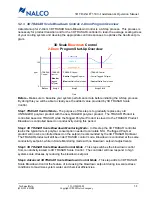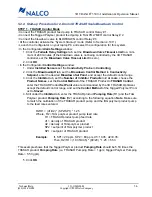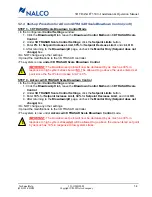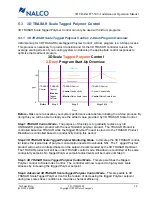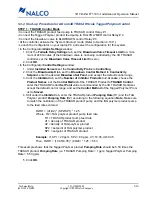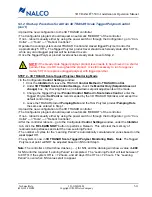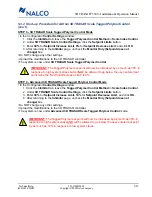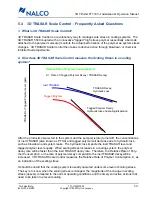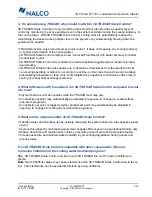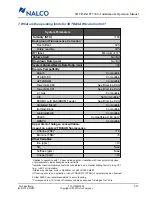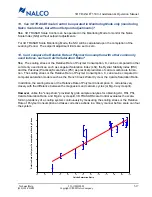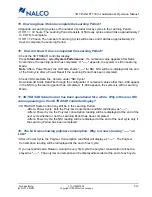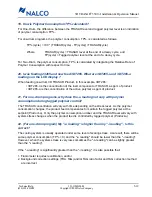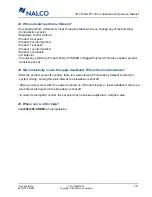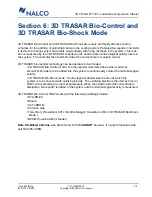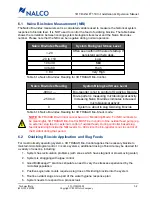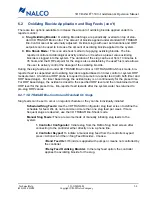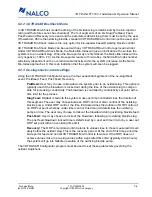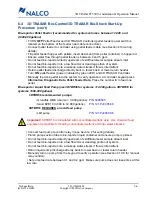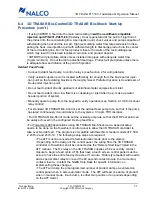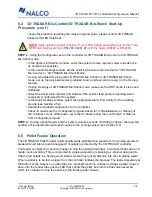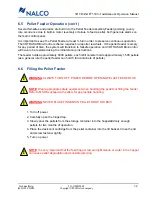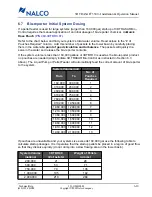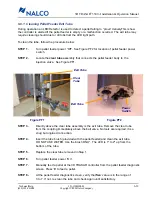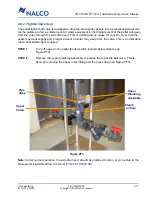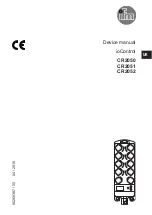
521-OM0108.88
Copyright
2009 Nalco Company
5-19
Technical Help
(630) 305-CHEM
3D TRASAR
5500 - Installation & Operation Manual
19. How is Polymer Consumption TP% calculated?
For One-Drum, the difference between the TRASAR level and tagged polymer level is an indication
of polymer consumption, TP%.
For one-drum programs, the polymer consumption, TP%, is calculated as follows:
TP%(cycle) = 100 * {TRASAR(cycle) - TP(cycle)} / TRASAR(cycle)
Where
TRASAR(cycle) = TRASAR level at the end of a decay cycle, and
TP(cycle) = Tagged polymer level at the end of a decay cycle.
For Two-Drum, the polymer consumption, TP%, is calculated by integrating the Relative Rate of
Polymer Consumption with respect to time.
20. I was feeding 23265 and now feed 3DT265. What are 3DT265-i and 3DT265-a
readings on the LCD display ?
When feeding one-drum 3D TRASAR Product, in this example, 3DT265:
• 3DT265-i is the concentration of the inert component or TRASAR, as ppm of product.
• 3DT265-a is the concentration of the active polymer, as ppm of product.
21. For one-drum programs, why does the -a reading not vary with polymer
consumption during tagged polymer control?
The TRASAR concentration will vary with time depending on the stress level. As the polymer
consumption changes, the product feed compensates to maintain the tagged polymer at the
setpoint (Product-a). Only the polymer consumption number, and the TRASAR level will vary with
system stress changes when the product feed is controlled by tagged polymer (Product-a).
22. (For one-drum program) My "-a reading" is higher than my "-i reading". Is this
correct?
The cooling system is usually operated under some level of scaling stress. As a result, there will be
some polymer consumption (TP% > 0) and the "-a reading" should be lower than the "-i reading".
However, when the system stress is very low, sometimes the "-a reading" can be slightly greater
than the "-i reading".
If the "-a reading" is significantly greater than the "-i reading", it is also possible that:
1. Fluorometer requires recalibration, and/or
2. Background correction settings (TRA, TAG) and/or TAG ratio factor and TAG correction method
are incorrect.

